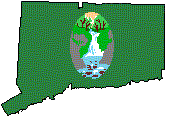|
Home Take a Tour Falls by Special Pictures Links of Interest News and Updates About this Site Support this Site  |
Purpose
As part of the field survey a water flow measurement is taken. The purpose of this measurement is to get an approximate idea of the volume of water going over the falls. This information will be used to rank the falls by water flow.
Flow Rates are Approximate
The water flow rates should be consitered approximate for several reasons.
- The water volume in most streams varies greatly depending upon the season and how long since the last rain storm. For this reason I have listed the month and year each measurement was taken.
- Most of the streams do not have accurate scientific flow meters in the vacinity of the waterfalls. All measurements were obtained using the field survey technique described below. Thus even the numbers are just an approximation of the water flow that was occurring at the time of the measurement.
Visualizing the Water Flow Rates
When you see numbers like 240 liters/sec or 63 gal/sec, it can be hard to visualize what that means. The following chart might help.
| Kitchen Faucet |
.08 - .23 liters/sec
.02 - .06 gal/sec |
| Fire Hydrant |
30 - 95 liters/sec
8 - 25 gal/sec |
| Niagara Falls |
2,842,500 liters/sec
750,000 gal/sec |
Waterflow Field Survey Technique
-
Find a location just above or below the falls where all the water from the stream flows straight with a minimal number of obstructions.
-
Mark out as long a section as I can (1 meter, 2 meters, ...) in the straight section.
-
Measure the deepest part of the stream in the section.
-
Measure the width of the stream in the section.
-
Throw small stick in the stream before the starting point and time how long it takes to flow from the starting point to the ending point.
-
The following formula is then used:
(Depth (meters) * Width (meters) * Length (meters) ) / Time (sec)
-
The final flow is rate is calculated by dividing the above result by 3. This is done because a stream does not have right angle sides, or a flat bottom and is flowing slower at the edges than the center.
|
